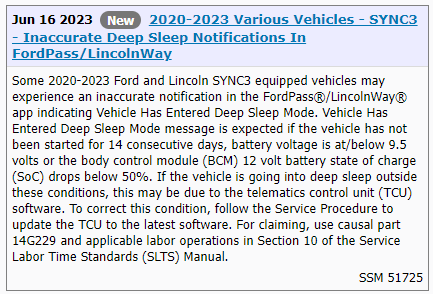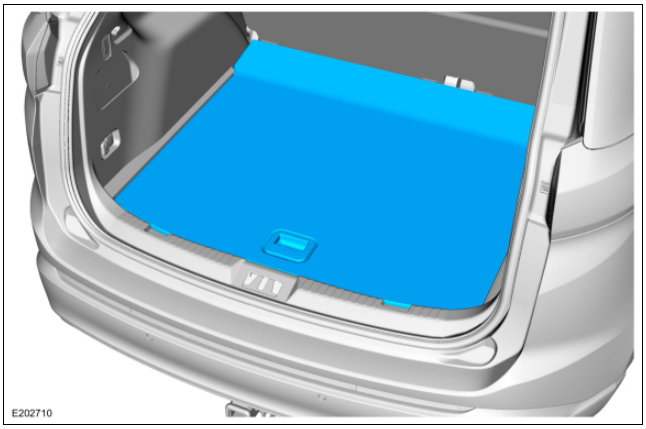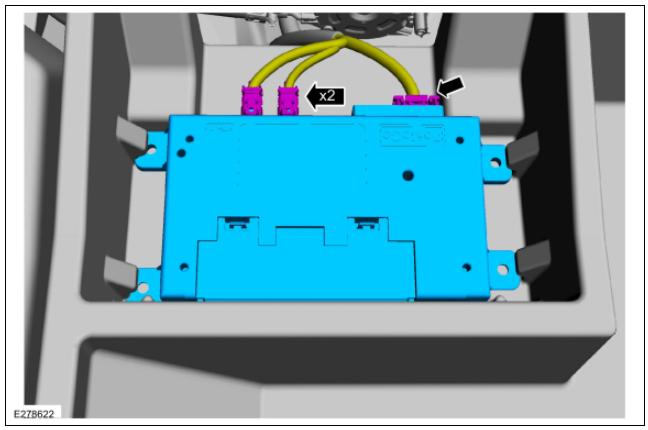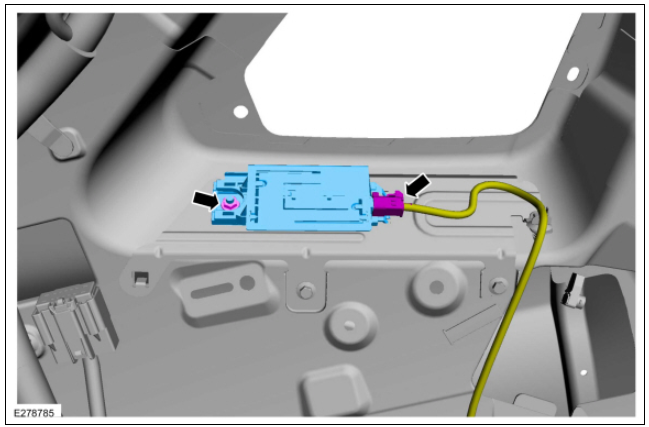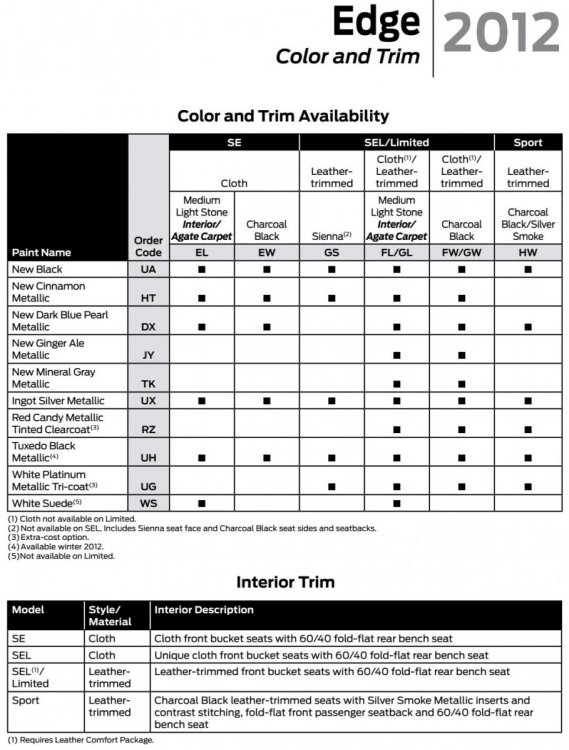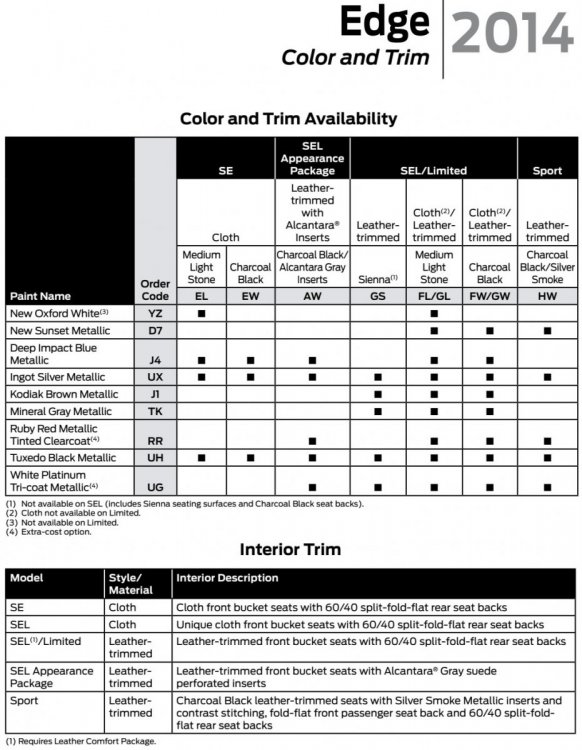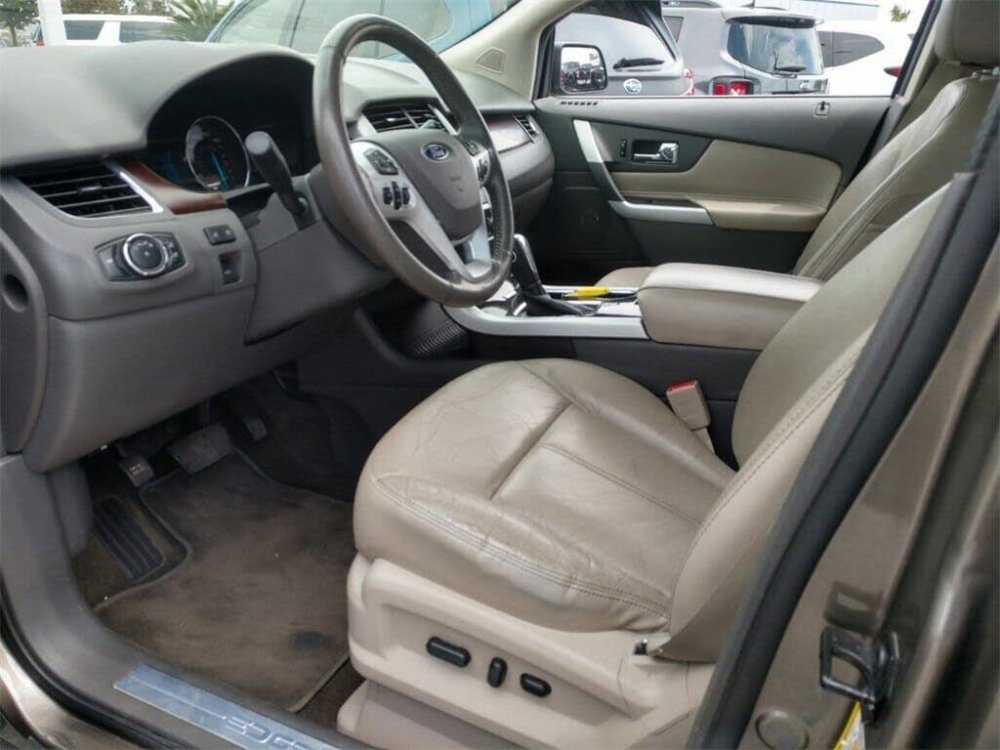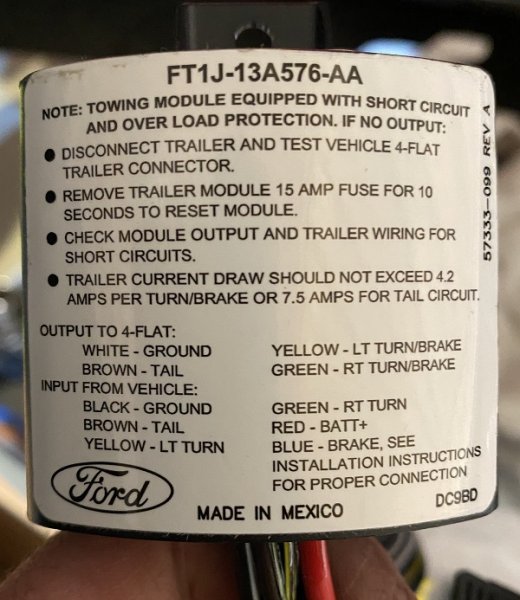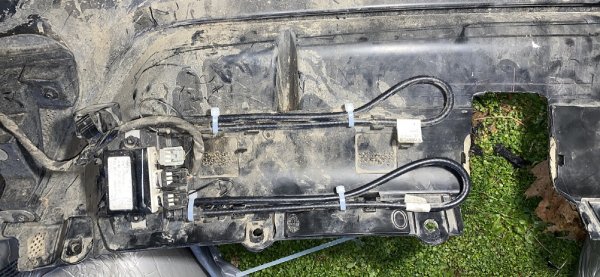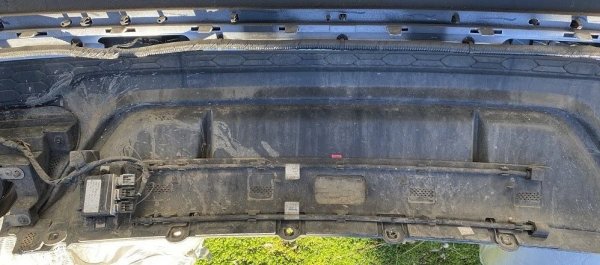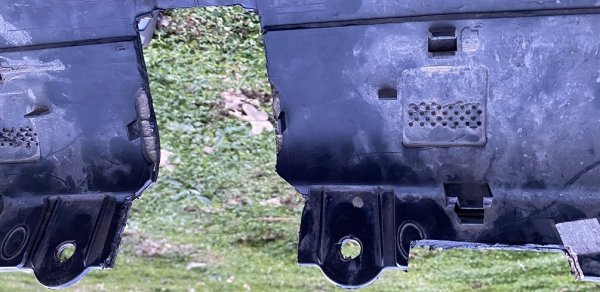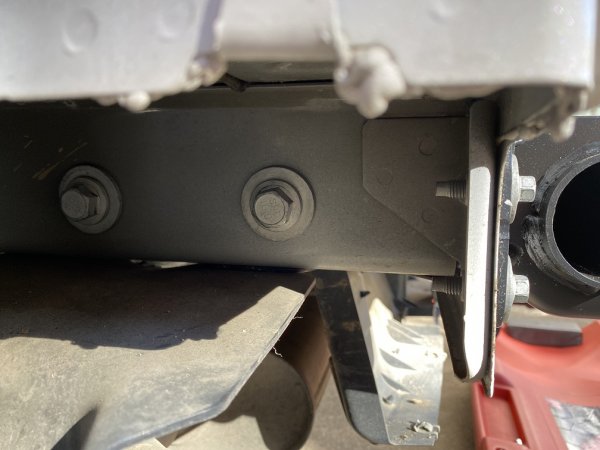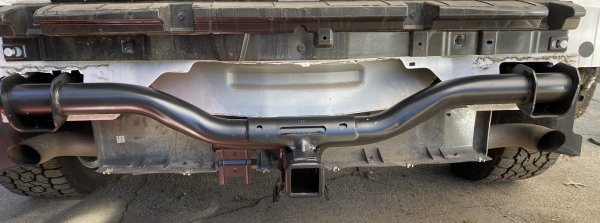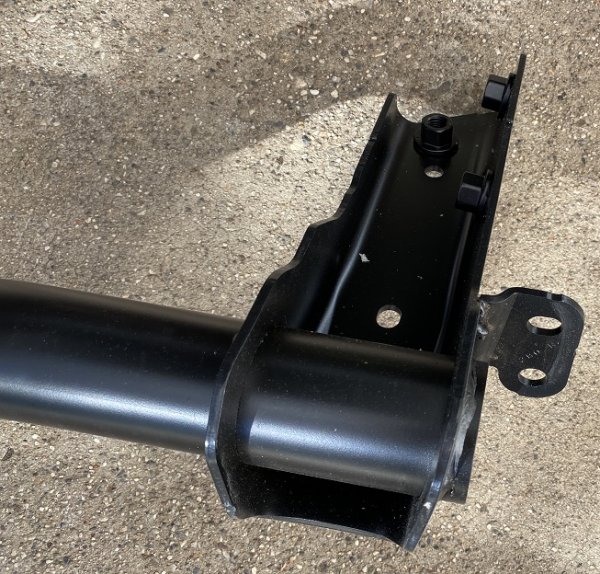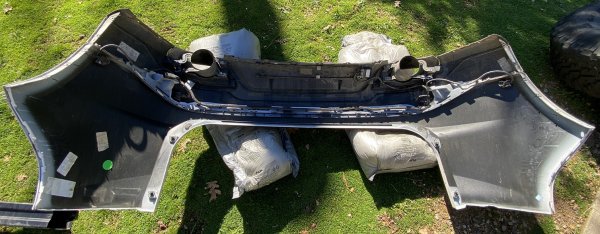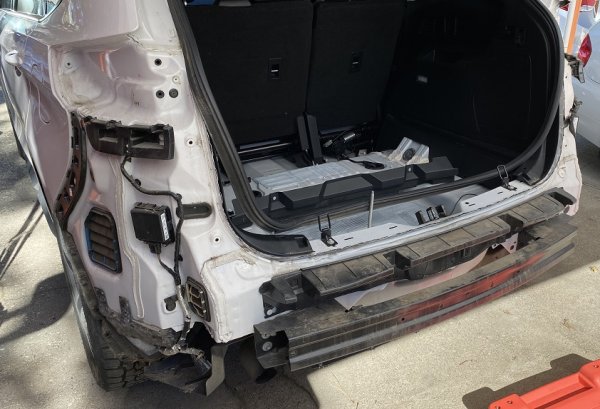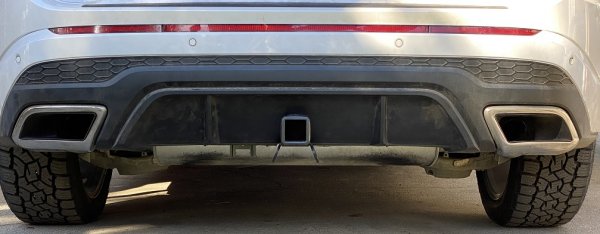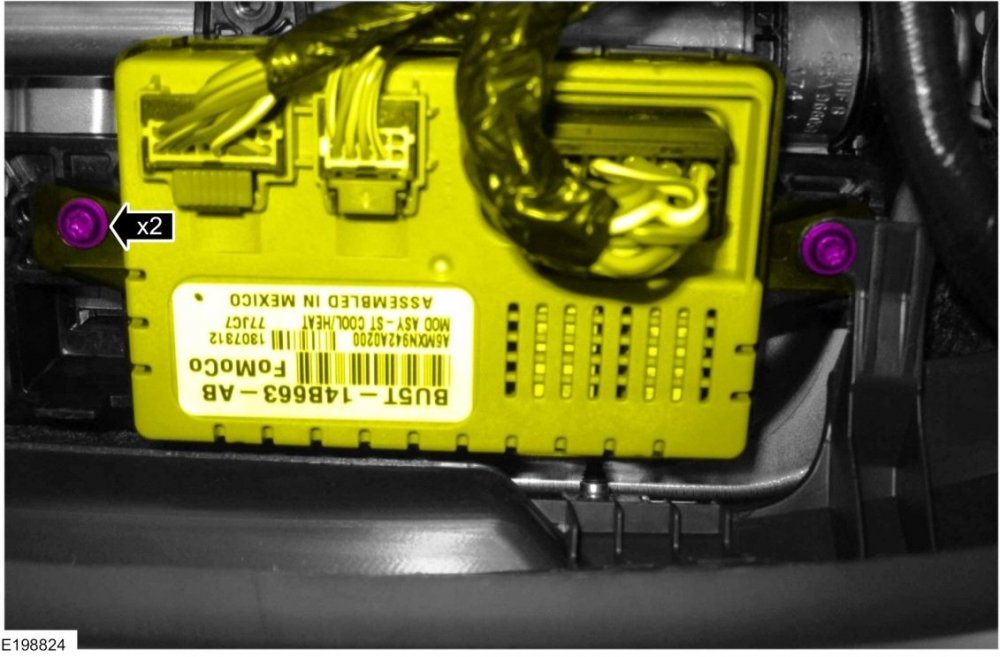

Haz
Edge Member-
Posts
1,568 -
Joined
-
Last visited
-
Days Won
435
Content Type
Profiles
Forums
Gallery
Everything posted by Haz
-

Manage Wi-Fi Networks Unavailable
Haz replied to jsalva04's topic in Audio, Backup, Navigation & SYNC
Looking at your Panama-market 2022 Edge SE's Window Sticker, FordPass connectivity via 4G modem/Wi-Fi is listed among its Standard Equipment, but not all items listed as Standard may be included in vehicles outside the continental United States... Looking at OASIS report data for your 2022 Edge SE, there is no data listed under the Modem-type field... This is in contrast to a comparably equipped USA-market 2022 Edge SE's OASIS report shows 4G as this vehicle's Modem type... Looking to your 2022 Edge SE's Detailed Vehicle Specifications report, among many items shown, these entries are included... This is in contrast to the comparably equipped USA-market 2022 Edge SE's Detailed Vehicle Specifications report, which includes these entries... The 2022 Edge Workshop Manual indicates the Module Address line-item for Telematics Control Unit (TCU) module programming data in Edge's As-Built Reprogramming report and its .AB digital file... Looking to your 2022 Edge SE's As-Built Reprogramming report, there are no entries in Line 754 for TCU, whereas the USA-market 2022 Edge SE's As-Built report which includes these numerous TCU programming data... 754-01-01 1002 0000 006F 754-02-01 1900 0000 1087 754-03-01 0A00 F135 30BF 754-03-02 CD52 3C0F 2DF7 754-03-03 005A 000F 05CF 754-03-04 0960 5050 006B 754-03-05 1000 2A88 7DA2 754-03-06 03C3 0FFC A0D5 754-03-07 1C40 4405 754-04-01 0064 9601 2C87 754-04-02 0064 0258 0A29 754-04-03 0078 0005 0AE9 754-04-04 003C 003C 00DB 754-04-05 140C 84 754-05-01 7072 6F64 3046 754-05-02 346E 6177 6945 754-05-03 6669 666F 7279 754-05-04 6400 0000 00C8 754-05-05 0000 0000 0065 754-05-06 0000 0000 0066 754-05-07 0000 0000 0067 754-05-08 0000 0000 0068 754-06-01 3030 3030 3052 754-06-02 3030 3030 3053 754-06-03 3030 3030 3054 754-06-04 3030 3030 3055 754-06-05 3030 3030 3056 754-06-06 3030 3030 3057 754-06-07 3030 3030 3058 754-06-08 3030 3030 3059 754-07-01 0203 596F 30 754-08-01 1D00 596F 49 754-09-01 0000 0000 0065 754-09-02 0000 0000 0066 754-09-03 0000 0000 0067 754-09-04 0000 0000 0068 754-10-01 5553 14 754-11-01 AA17 754-12-01 006E 754-13-01 0001 0205 0279 754-13-02 0202 0502 027D 754-13-03 0205 0001 027B 754-13-04 0503 0303 0A8A 754-13-05 0303 030A 0086 754-13-06 0203 0A04 048B 754-13-07 040F 0404 0494 754-13-08 0F85 754-14-01 4B4B 4B4B 4BE7 754-14-02 4B4B 4B4B 4BE8 754-14-03 4B4B 4B4B 4BE9 754-14-04 4B4B 4B4B 4BEA 754-14-05 4B4B 4B4B 3CDC 754-14-06 3C3C 3C3C 3CA1 754-14-07 3C32 3C3C 3C98 754-14-08 32A9 754-15-01 4445 3031 015C 754-15-02 0708 81 754-16-01 0173 754-17-01 001B 1387 28 754-256-01 0507 40 All these findings point to your Panama-market 2022 Edge SE not being equipped with a Telematics Control Unit (TCU) module, and as a result, your Edge is not capable of Wi-Fi connections or cellular telecom connections for over-the-air Ford Power-Up software updates. Physically checking your Edge for an installed TCU is quick and easy, and could be worthwhile. With appreciation to Forum member dabangster for this photo, if you fold down your Edge's left hand second row seat, and lift the forward corner of the cargo floor cover, you may or may not see an installed TCU... If you do find an installed TCU, you could perform the Bezel Diagnostics procedure to assess it, though lacking As-Built data, TCU diagnostics will likely not be viewable... Bezel Diagnostics - General Procedures - 2022 Edge Workshop Manual.pdf (download link) Additional document download links> Module Configuration - Vehicles With Over-the-Air (OTA) Programming - Description and Operation - 2022 Edge Workshop Manual.pdf Module Configuration - System Operation and Component Description - 2022 Edge Workshop Manual.pdf Ethernet Module Communications Network - System Operation and Component Description - 2022 Edge Workshop Manual.pdf Ethernet Module Communications Network - Component Location - 2022 Edge Workshop Manual.pdf Telematics Control Unit (TCU) Module - Removal and Installation - 2022 Edge Workshop Manual.pdf Telematics Control Unit (TCU) Module Antenna - Removal and Installation - 2022 Edge Workshop Manual.pdf Good luck! -
Document download links> 2024 Edge Order Guide - 05-23-2023.pdf 2024 Ford RV & Trailer Towing Guide - Edge.pdf
-

Customer Satisfaction 22N12- Flex Plate Crack on 2.0
Haz replied to All Hat No Cattle's topic in Recalls, TSBs & Warranty
The following is a download link to the Supplement #1 of the U.S. CSP 22N12 Dealer Bulletin... Customer Satisfaction Program 22N12 - U.S. Full Dealer Bulletin - Supplement #1 - May 26 2023.pdf Ford of Canada Customer Satisfaction Program 22N12 documents can be found in this Forum discussion post. Good luck! -
Welcome to the Forum, baddream ! Past Forum discussion on Customer Satisfaction Program 22N12 has focused upon its administration in the United States, so your question is especially appropriate because Edge owners in Canada deserve access to their county's CSP 22N12 documents, which can be downloaded via links at the bottom of this post. It is unclear from your comments if your 2018 Edge is exhibiting any of the rattle symptoms described in the Owner Letter you received. As the letter indicates, the inspection you mention is appropriate only if the described rattle symptoms are present. Also unclear is if you purchased your 2018 Edge new, or, if you purchased your 2018 Edge as a used vehicle and you are not the original owner. Let's begin by recapping the timing of Ford of Canada communications on CSP 22N12, because Ford is not "just getting around to it in Canada". Advance Notice To Dealers - August 26, 2022; Full Dealer Bulletin - September 8, 2022 (Not available for inclusion below); First Owner Letter - September 2022; Full Dealer Bulletin, Supplement #1 - June 16, 2023; Second Owner Letter - June 2023; One important feature of CSP 22N12 not included in the second Owner letter, due to the timing of its release, is the provision "Until February 28, 2023 all vehicles will have 100% coverage (regardless of time or distance)". If you are the original owner of the 2018 Edge (in Ford's ownership database) and you did not receive the first Owner letter released in September 2022 -- and your Edge was exhibiting rattle symptoms over the span of time between September 2022 through February 28, 2023, which now prove out to be due to a cracked Flexplate -- then it would be reasonable for you to assert you could have had your Edge repaired prior to the expiration of the 100% coverage time period, and, to ask the dealer to elevate your 100% coverage request if it was initially denied, due to you not being notified by Ford in a timely way (First Owner Letter not received). Once again, if your Edge presently shows no rattle symptoms as described in the various below-linked Ford of Canada documents, then there's no present need for you to take your Edge in for the CSP 22N12 inspection. But, you may want to take it in for inspection shortly before your Edge hits the 192,000 kilometers mark -- If you keep it that long. Document download links> Customer Satisfaction Program 22N12 - Canada Advance Notice Dealer Bulletin Letter - August 26 2022.pdf Customer Satisfaction Program 22N12 - Canada Owner, First Letter - September 2022.pdf Customer Satisfaction Program 22N12 - Canada Full Dealer Bulletin - Supplement #1 - June 16 2023.pdf Customer Satisfaction Program 22N12 - Canada Owner, Second Letter - June 2023.pdf Good luck!
-
Embarking on what I hoped would be non-destructive testing, I expected to use a pair of fisherman's needle-nose pliers to compress the lug-ends of the pin to allow its withdrawal, but there's no room for that. Trying to rotate the Retaining Pin in its installed position also brought no result -- the slot in the head flanges apparently keys the pin in place, radially, on a rib in the unobserved structure... Working entirely by feel with the Glove Box Door closed, pushing on one of the lugs with my finger revealed the split-pin end was surprisingly soft & springy. I decided it was worth taking the chance to just laterally pull the pin out. My initial attempt using the finger paddle was difficult, so I decided to insert the needle-nose plier into the thru-hole of the pin head... ...and the pin came out of the structure & hinge arm rather easily. Putting the pin back in place -- again only by feel with the Glove Box Door closed -- allowed the pin to go as far as the hinge arm hole, but then there was resistance. I unlatched the Glove Box Door and let it hang open on the slow-open damper string attachment, and then the pin moved easily the rest of the way into place. I only removed the right-side Retaining Pin, but the left side should be just as easy a task, with each pin withdrawing from the structure toward the middle of the Glove Box Door. Removing the damper-string should then allow the entire Glove Box -- door & tray assembly -- to be removed from the Instrument Panel. You can then assess the condition of the Retaining Pins and mating structures, toward determining the cause of the Glove Box Door misalignment. Good luck!
-
Welcome to the Forum, Red14 ! Here is your second photo, showing the extent of the glovebox door's misalignment... Link to high-res Glove Box - Exploded View illustration which can be zoomed and scrolled in Web Browser... Perhaps you have already noticed the white-colored hinge pins visible in your photo, located on the Glove Box door's left and right side (red arrows)... Ford's online parts-selling site shows a black-plastic version of these removable pins, which are spit with retaining lugs that lock the pin in place upon insertion... This Workshop Manual CAD illustration, with the Glove Box Door removed, shows the combination of two removable Hinge Retainer Pins and a fixed-in-place rod upon which the two Glove Box Door's middle hinge arms rotate... While these photos of my 2015 MKX's Glove Box Door hinge details are more than a bit blurry, they show the middle hinge arms are open on the bottom... ...while the outer left & right side hinge arms fully enclose the removable Retainer Pins... ...which are locked in place by the outboard-facing retaining lugs... All of this indicates that removing the outboard Retainer Pins allows the middle hinge arms to move upward off the fixed-in-place rod, and the Glove Box Door can then be removed. Good luck!
-
The GEN 1/1+ Edge procedure is fairly simple, though the Workshop Manual images are line drawings... Document download link> Liftgate Latch Manual Release - General Procedures - 2011 Edge Workshop Manual with Enlarged Images.pdf The GEN 2 Edge procedure is a bit more elaborate, but at least the Workshop Manual images are more satisfying... Document download link> Liftgate Latch Manual Release - General Procedures - 2015 Edge Workshop Manual.pdf Good luck!
-
The linked Blower Motor document applies to all GEN 2 Edges, from 2015 -2023 model years. The GEN 1 Edge procedure is identical, though the Workshop Manual illustrations are not as graphically pleasing... Document download link> Blower Motor - Removal and Installation - 2007-2014 Edge Workshop Manuals.pdf Good luck!
-
TSB 21-2389 is the most recently released Service Procedure for this issue... Document download link> TSB 21-2389 - 8F35 Transmission - Shudder-Buck-Jerk While Driving Up To 35 MPH (57 Km-H) - Built On Or Before 11-Mar-2021.pdf Good luck!
-

2020 Wiring Diagram (6 speaker system)
Haz replied to DBBobbyT's topic in Audio, Backup, Navigation & SYNC
Workshop Manual image of factory-installed Subwoofer mounted located behind RH Loadspace Trim Panel... Good luck!- 6 replies
-
- stereo
- wiring harness
-
(and 1 more)
Tagged with:
-
SSM 51778 - 2020-2022 Various Vehicles - Audio Inoperative - No Sound From Audio Speakers - No Communication With ACM Or DSP - DTC U0184, U0237 And/Or U0238 Some 2020-2021 Escape built on/before 23-Nov-2021, 2021 F-150 built on/before 08-Oct-2021, 2021 Mustang Mach-E built on/before 29-Mar-2021, 2021 Expedition built on/before 05-Aug-2021, 2021 Explorer built on/before 27-Sep-2021 and 2020-2022 Edge may exhibit a concern of the audio system does not power on, no sound from audio speakers, chimes default to coming through the instrument cluster, no communication with audio control module (ACM) or digital signal processor (DSP) module, and/or diagnostic trouble code (DTC) U0184, U0237 and/or U0238. To correct the condition, perform a hard reset of the DSP by disconnecting the 12-volt battery. Reprogram the DSP module using the latest version of the appropriate Ford diagnostic scan tool. For claiming, use causal part 18B849 and any applicable labor operations in Section 10 of the Service Labor Time Standards Manual.
-

2020 Wiring Diagram (6 speaker system)
Haz replied to DBBobbyT's topic in Audio, Backup, Navigation & SYNC
Front Audio Control Module (ACM) C240A via Instrument Panel main harness to Inline Connector C212 at front of Center Console... Inline Connector C212 to Inline Connector C755 on LH B-Pillar... Inline Connector C212 also serves Inline Connector C855 on RH B-Pillar... ACM to 6-Speakers Wiring Diagram... Document download links> AUDIO CONTROL MODULE (ACM) - Connector C240A Details - 2022 Edge.pdf Inline Connector C212 Circuit-Pin Details - 2022 Edge.pdf Inline Connector C755 Circuit-Pin Details - 2022 Edge.pdf Inline Connector C855 Circuit-Pin Details - 2022 Edge.pdf REAR DOOR SPEAKER LH - Connector C702 Details - 2022 Edge.pdf REAR DOOR SPEAKER RH - Connector C802 Details - 2022 Edge.pdf Good luck!- 6 replies
-
- stereo
- wiring harness
-
(and 1 more)
Tagged with:
-
Thus far, Ford has released three Special Service Messages relating to the Deep Sleep Notification issue: SSM 50975 in July 2022; SSM 51449 in March 2023; SSM 51725 in June 2023; All are contained in this Recalls, TSBs & Warranty Forum discussion. Good luck!
-
This recent Special Service Message describes the conditions that rightfully trigger a Deep Sleep notification, and if, in 2020-2023 model year vehicles, the notification occurs apart from those expected conditions, that a Telematics Control Unit (TCU) software update may be needed... The 2019 Edge Workshop Manual offers this explanation, which may be comparable to the Ford website information you mention... SYNC Connect (if equipped) NOTE: Depending on the notification settings, the vehicle may report a “Deep Sleep Mode” on supported mobile Apps. This occurs when battery voltage drops below a level necessary for correct vehicle operation or the vehicle has been inactive for a number of days. The SYNC Connect system (when activated) can be used to provide remote connectivity through the FordPass mobile phone application. It can monitor certain vehicle systems and carry out vehicle functions such as: reading the fuel level and odometer. receiving remote alerts and notifications. carrying out or scheduling remote starts (if enabled through the IPC ). using the vehicle locator. vehicle lock/unlock control and vehicle lock/unlock status. NOTE: If vehicle battery voltage falls below the minimum required or the vehicle has been inactive beyond a designated time limit, the TCU turns off until the next engine running event to preserve battery power. The connected mobile device App reports a deep sleep mode if notifications are turned on. Refer to the mobile device App information to set notifications and for a list of disabled features when the vehicle is in deep sleep mode. Workshop Manual images showing TCU location... TCU Antenna module is located behind LH Loadspace trim panel... Good luck!
-
Comparison of 2012 Edge and 2014 Edge interior color availability... Versus... ua Presumably, your Edge's seats that you describe as being Sandstone are actually Medium Light Stone... From a CarGurus.com listing, VIN of 2014 Edge Limited with Medium Light Stone seats: 2FMDK3KC5EBB63684... Photo of this 2014 Edge, showing seat upholstery design and color consistent with photo you posted... Good luck!
-
Special Service Message 51762 - 2021-2023 Various Vehicles - Navigation Feature Unable To Change From Miles To Kilometers On SYNC 4 Equipped Vehicles Some 2021-2023 Ford and Lincoln vehicles equipped with SYNC 4 may exhibit the navigation feature in the center display screen only displaying imperial units and not being able to change to metric. This may be due to the software level of the SYNC module (APIM). This issue does not affect vehicle durability and no additional diagnosis or service is required for this condition at this time. Inform customers that engineering is currently working on a solution for this condition and will be released via Ford Power-Up software updates delivered over-the-air (OTA) expected in September 2023. Software will update automatically if vehicle connectivity is enabled in the vehicle’s settings. Schedule a service visit for customers who have disabled vehicle connectivity or who report that they did not receive the update in September 2023. Monitor OASIS for additional information.
-

2017 Edge Sport Ford OEM Trailer Hitch Install
Haz commented on TheTurboEdge's gallery album in Member Photo Albums
Vinnie75... Link to this FordParts page Link to this FordParts page Document download links> Hands-Free Liftgate Actuation Upper Sensor - Removal and Installation - 2017 Edge Workshop Manual.pdf Hands-Free Liftgate Actuation Lower Sensor - Removal and Installation - 2017 Edge Workshop Manual.pdf Good luck! -
Welcome to the Forum, Jim_B ! These Charging System references may be helpful... Document download links> Charging System - Principles of Operation - 2008 Edge Workshop Manual.pdf Charging System Pinpoint Test D - Diagnosis and Testing - 2008 Edge Workshop Manual.pdf Charging System Wiring Diagram - 2008 Edge.pdf Generator - Connector C102A Details - 2008 Edge.pdf Powertrain Control Module - Connector C175B Details - 2008 Edge.pdf Powertrain Control Module - Connector C175B Location - 2008 Edge.pdf Powertrain Control Module (PCM) - Removal and Installation - Reference For PCM Location - 2008 Edge Workshop Manual.pdf Good luck!
-

How to remove plastic cover under pax seat
Haz replied to F4Gary's topic in Interior, A.C., Heat, Interior Trim
Removing two Torx screws will allow you to reposition and/or remove the Front Seat Climate Control Module (SCME)... Document download links> Front Seat Climate Control Module (SCME) Location - 2017 Edge.pdf Front Seat Climate Control Module (SCME) - Removal and Installation - 2017 Edge Workshop Manual.pdf Good luck! -
Ford has issued this Advance Notice to Dealers about the upcoming Safety Recall 23S32 affecting certain 2023 Nautilus vehicles, shown below. Until uniquely identified replacement parts are available in sufficient number to equitably address the population of vehicles involved, this Safety Recall is not actionable, that is, dealers have been directed to wait until the complete Dealer Bulletin with parts-ordering information is provided to them in the 3rd Quarter 2023. I will update this post when the complete Notice To Dealers letter is released. Good luck!
- 1 reply
-
- 2
-

-
Clearing DTCs does not necessarily eliminate the underlying causes that trigger them, but can create a clean slate upon which your Edge's current problem can be written, via its DTC. The DTC or Symptom chart provides direction on the Pinpoint Test used to identify and resolve the issue. If you've not yet scanned your Edge, that is Step 1. Good luck!
-
From the 2009 Edge Workshop Manual.... Charging System Principles of Operation The PCM-controlled charging system, or "Smart Charge" charging system, determines the optimal voltage set point for the charging system and communicates this information to the voltage regulator. The "Smart Charge" charging system is designed to set 1 of 5 DTCs any time a charging system fault is present. All of the DTCs can set continuous faults, but not all DTCs will set as on-demand faults. DTC KOEO KOER Continuous P0563 X X X P0620 X P0625 X X P0626 X X P065B X This system uses 2 communication lines between the PCM and the generator/voltage regulator. Both of these communication lines use Pulse-Width Modulation (PWM) . The generator communication (GENCOM) line communicates the desired set point from the PCM to the voltage regulator. The generator monitor (GENMON) line communicates the generator load and error conditions to the PCM. The GENCOM command is only sent by the PCM when it is necessary to adjust the voltage set point. If the set point does not need to be changed, several seconds may elapse between PCM GENCOM commands. This normal operation will appear in the PID as occasional "bursts" of pulse-width commands. The third pin on the voltage regulator, the A circuit pin, is a circuit dedicated to monitor or sense battery voltage. The PCM simultaneously controls and monitors the output of the generator. When the current consumption is high or the battery is discharged, the PCM will raise engine speed as needed to increase generator output. The generator charges the battery and at the same time supplies power for all of the electrical loads that are required. The battery is more effectively charged with a higher voltage when the battery is cold and a lower voltage when the battery is warm. The PCM is able to adjust the charging voltage according to the battery temperature by using a signal from the Intake Air Temperature (IAT) sensor. The PCM also uses other inputs to control charging system voltage such as the Vehicle Speed Sensor (VSS) and Engine Coolant Temperature (ECT) . This means the voltage set point is calculated by the PCM and communicated to the voltage regulator by the GENCOM circuit based on the needs of the vehicle and the conditions. To minimize engine drag when starting the engine, the PCM does not allow the generator to produce any output until the engine has started. The PCM turns off the generator during cranking to reduce the generator load and improve cranking speed. Once the engine starts, the PCM slowly increases generator output to desired voltage. The PCM controls the charging system warning indicator by sending a message over the High Speed Controller Area Network (HS-CAN) to the Instrument Cluster (IC) module. The IC module will then control charging system warning indication based on the message from the PCM. If equipped with a charging system warning indicator, the IC module will turn the indicator ON or OFF. If equipped with a message center, the IC module will display a CHECK CHARGING SYSTEM message. When the ignition is ON and the engine is OFF on vehicles equipped with a message center, the CHECK CHARGING SYSTEM message may not be displayed. For information regarding the IC module and message center, refer to Section 413-01. Under certain circumstances, the charging system may have a concern, but still keep the battery charged and the vehicle running. GENCOM is normally used to initiate charging, but the generator may charge with a fault in this circuit. If the engine is operated at greater than 2,000 rpm momentarily, the generator may "self-excite" or start charging on its own. The charging system warning indicator is illuminated and/or CHECK CHARGING SYSTEM message is displayed, and the generator operates in a default mode (approximately 13.5 volts) until the engine is turned off. When the engine is restarted and the engine is operated at greater than 2,000 rpm momentarily, the generator may again self-excite and again the charging system warning indicator is illuminated and/or CHECK CHARGING SYSTEM message is displayed. The PIDs and their associated descriptions used in the charging system diagnosis are listed below: PID Chart PID Description Normal Display Associated Circuit Name Connector, Circuit GENMON Generator monitor (GENMON) Constant fluctuating percentage 3%-98% Generator monitor (GENMON) C102A-1, CDC15 (VT) GENCMD Generator command (GENCMD) Fluctuating percentage or small intermittent bursts 3%-98% Generator communication (GENCOM) C102A-2, CDC10 (BU/OG) GENVDSD Generator voltage desired Voltage varies by vehicle needs - May be controlled by an output state control — — GENFIL Generator fault indicator lamp command/status OFF charging system is OK — — GENCMD_LF Generator command line fault NO FAULT if GENCOM circuit (GENCMD PID) is OK — — GENMON_HZ Generator monitor frequency NO FAULT if GENCOM frequency is OK — — VPWR Module supply voltage Within 0.5 volt of battery voltage — — RPM Engine revolutions per minute Engine rpm - May be controlled by an output state control — — NOTE: If no charging system DTCs are present, the charging system is operating correctly. If the charging system has a concern, it usually sets a charging system DTC. Document download links> Charging System - Diagnosis and Testing - Principles of Operation - 2009 Edge Workshop.pdf Charging System - Diagnosis and Testing - Diagnostic Trouble Code (DTC) Chart - 2009 Edge Workshop.pdf Charging System - Diagnosis and Testing - Symptom Chart - 2009 Edge Workshop.pdf Charging System - Diagnosis and Testing - Pinpoint Tests - 2009 Edge Workshop .pdf Good luck!
-

Windshield Replacement
Haz replied to 1004ron's topic in Glass, Lenses, Lighting, Mirrors, Sunroof (BAMR), Wipers
-

Windshield Replacement
Haz replied to 1004ron's topic in Glass, Lenses, Lighting, Mirrors, Sunroof (BAMR), Wipers
Sorry, I've been away and didn't know I was being summoned. Document download links> Roof Opening Panel Front Trim - Removal and Installation - 2017 Edge Workshop Manual.pdf Roof Opening Panel Side Trim - Removal and Installation - 2017 Edge Workshop Manual.pdf Good luck! -
Welcome to the Forum, Sylvester! I understand from your Forum message that your Edge is a 2015 SEL 2.0L EcoBoost. The following Edge Workshop Manual Warning Chimes section describes the source and characteristics of Edge audible warning chimes... Documents download link> Warning Chimes - System Operation and Component Description - 2015 Edge Workshop Manual.pdf Seatbelt Minder Deactivating-Activating - General Procedures - 2015 Edge Workshop Manual.pdf I see the Lane Keeping Alert Warning System Chime is a triple 1/4-second chime pattern for hands-off the steering wheel, but Lane Keeping is not operable below 64km/hr (40 mph), so that doesn't fit your circumstances. The PRNDL Not In Park Warning Chime is a triple 1/2-second chime pattern, but it is accompanied by a Not In Park text box in the Message Center, so that clearly doesn't fit either. Look over the Warning Chimes document to see if any described system/circumstance fits what your Edge exhibits -- if there is a next time. The Belt-Minder Feature chime fits the profile of low speed/starting out, so take a closer look at that description, perhaps, in case you had a weighty item on the passenger seat. Getting your Edge scanned for Diagnostic Trouble Codes (DTCs) may be useful, if the condition persists. Good luck!





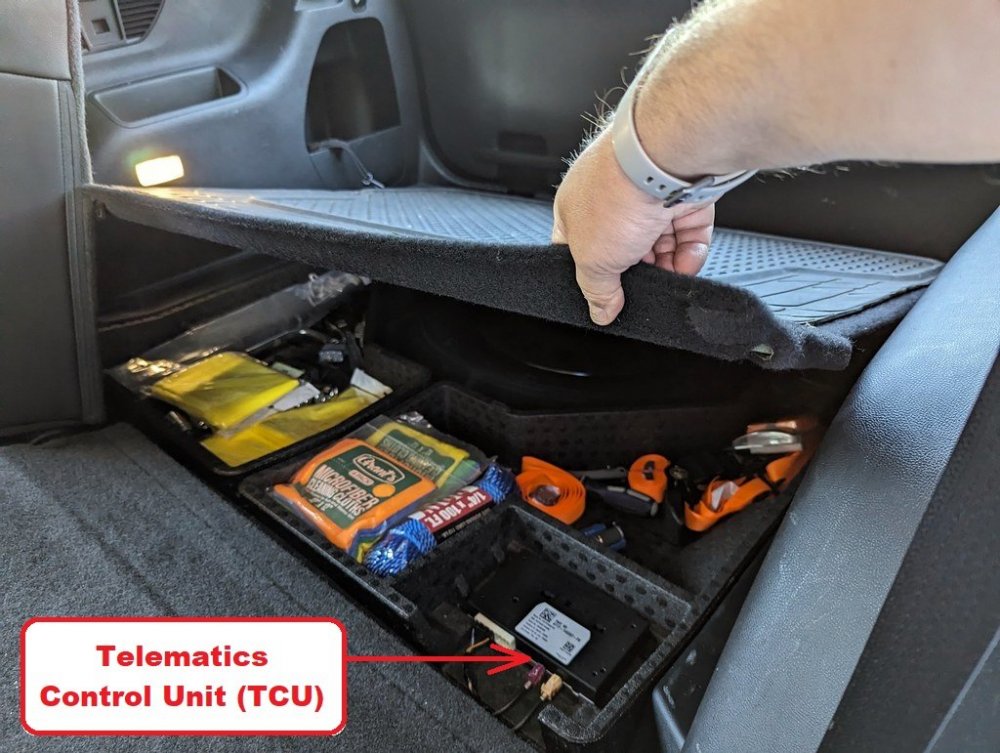





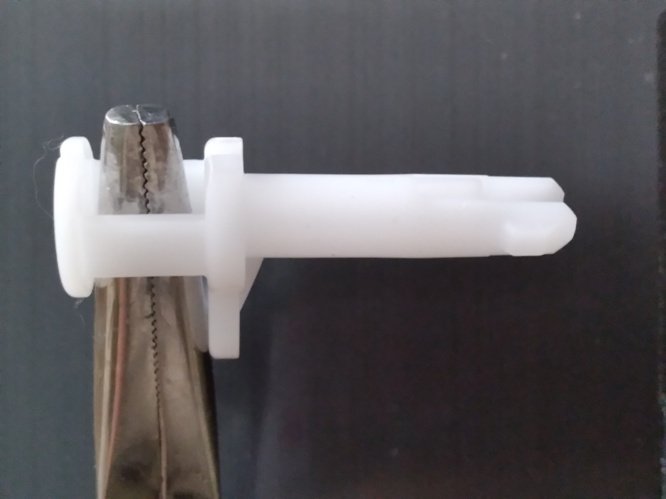
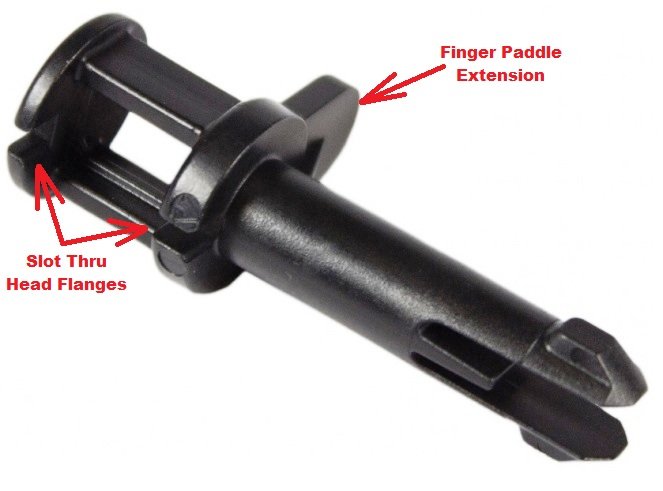
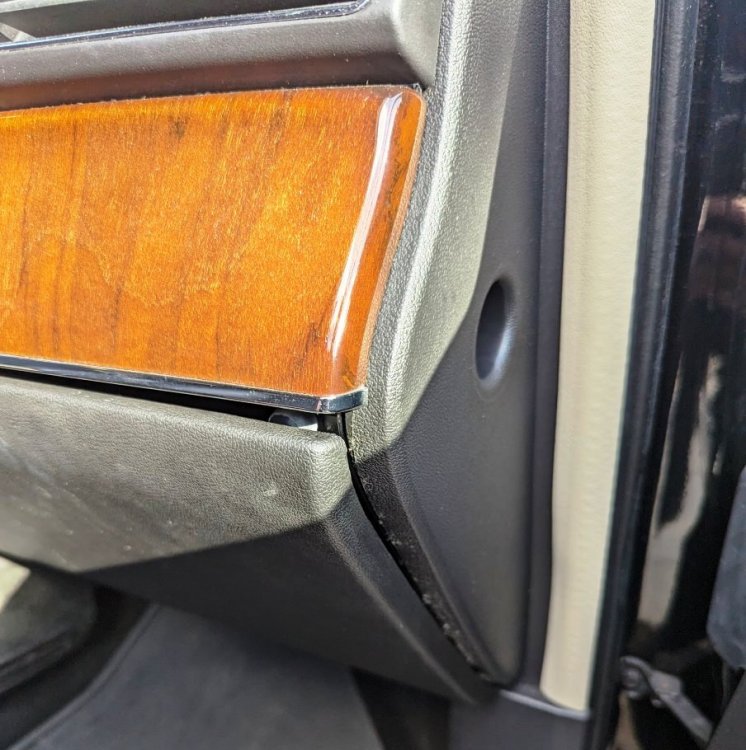

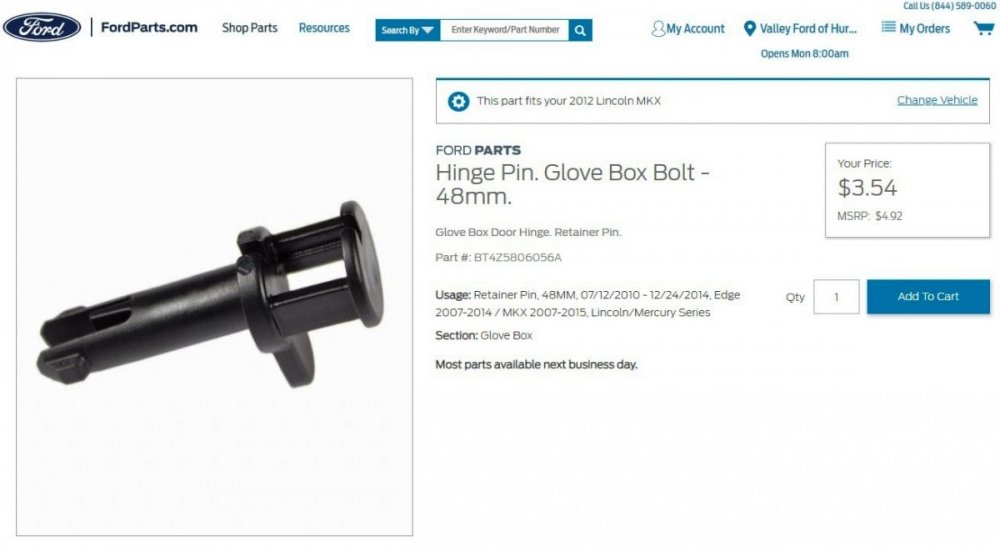
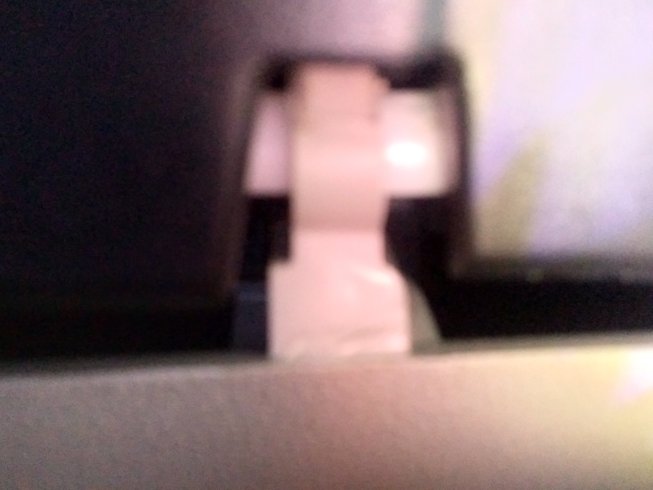
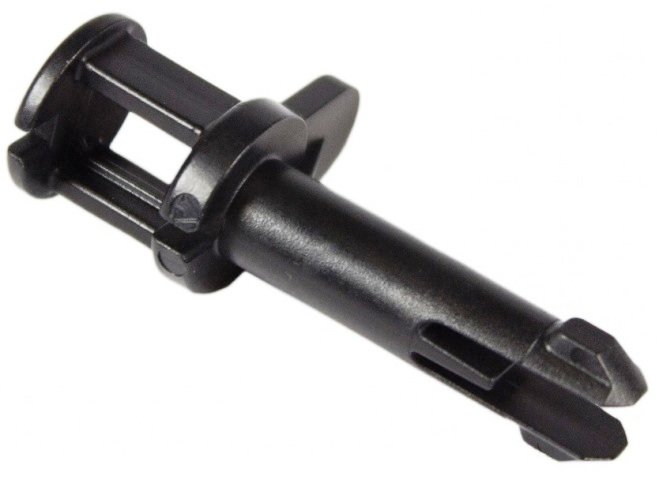

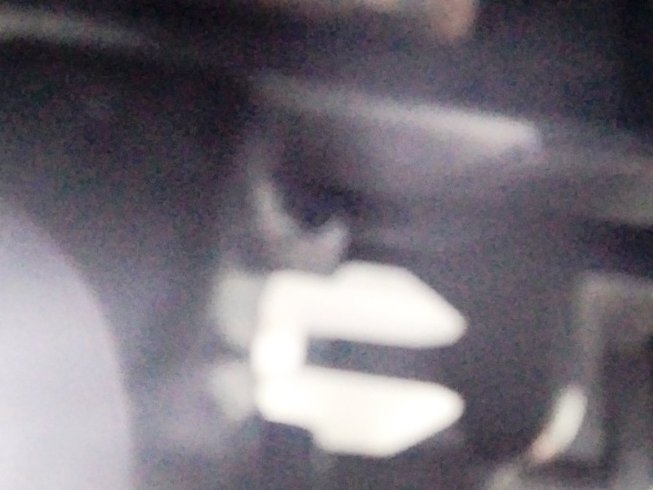
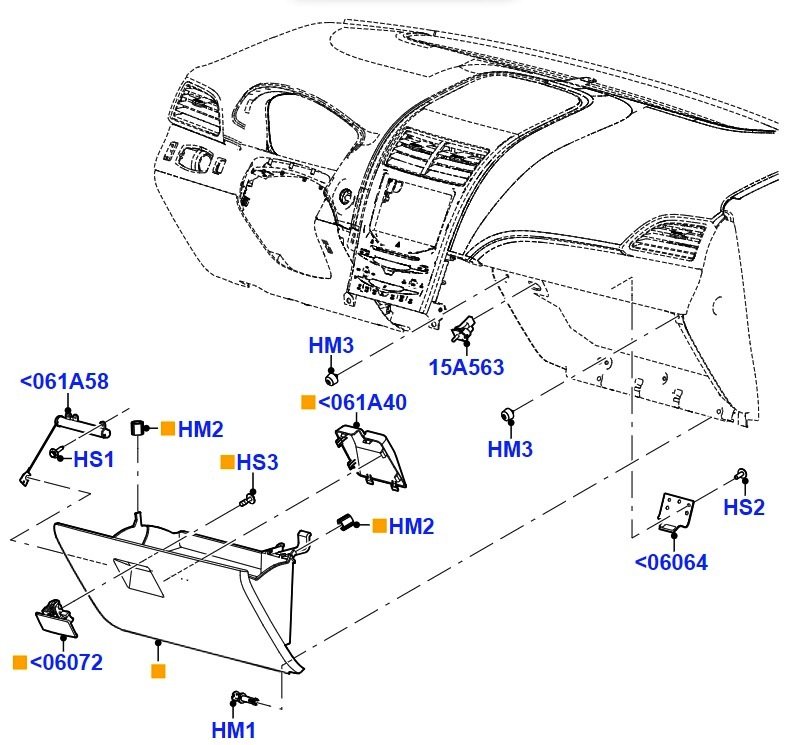


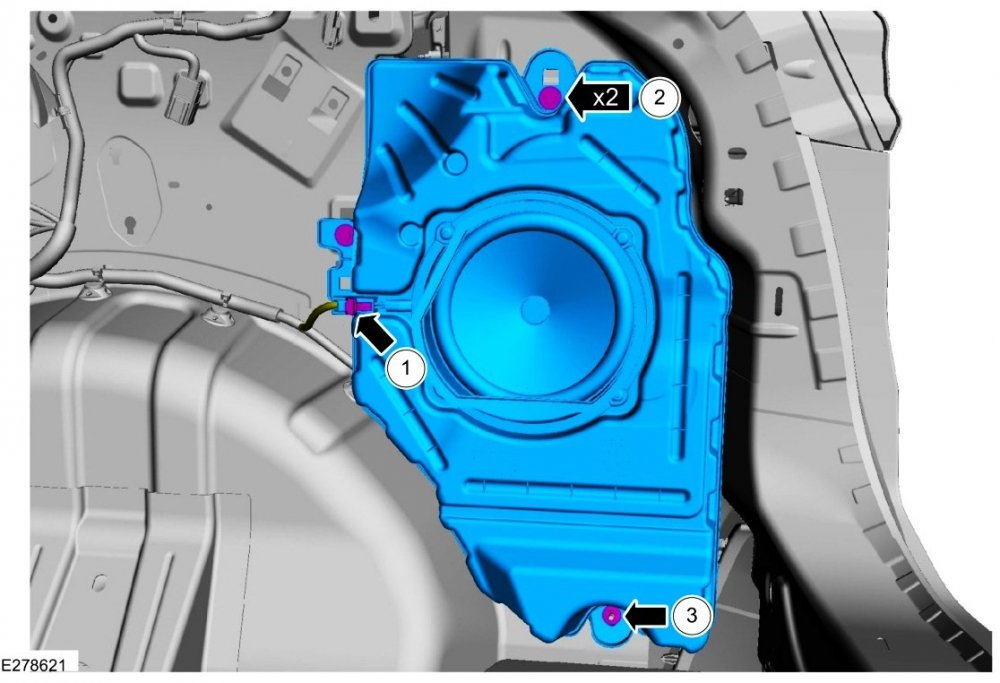
6-SpeakerWiringDiagram-2022Edge.thumb.jpg.45dd91b3569fdb62f0e026b70e9b82d6.jpg)
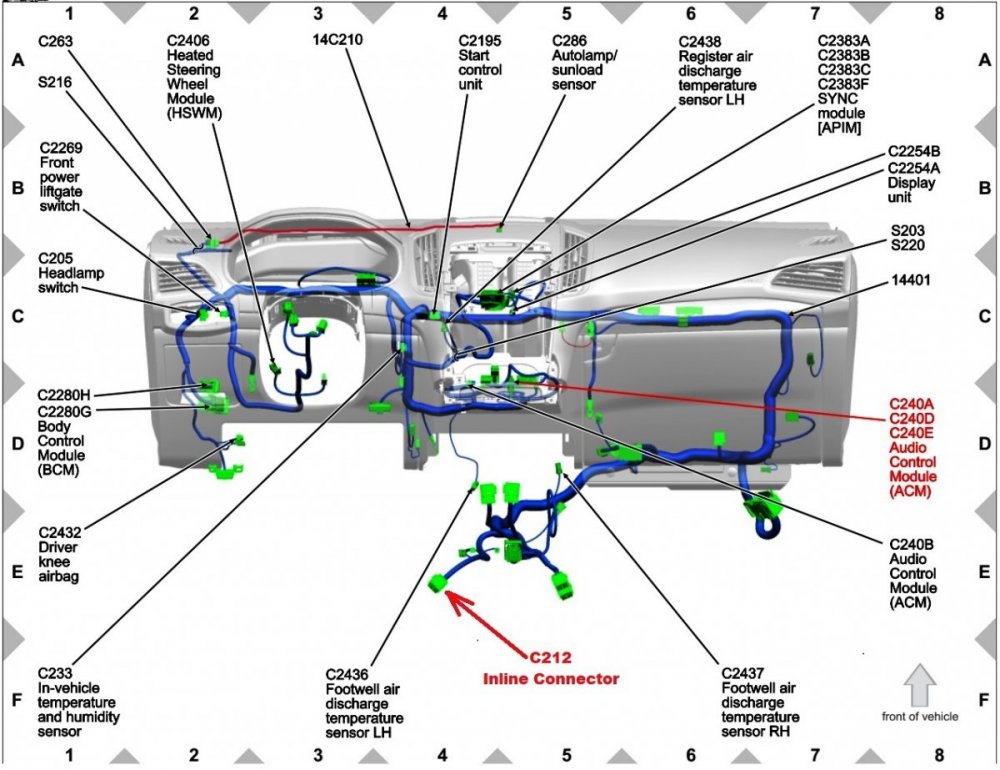
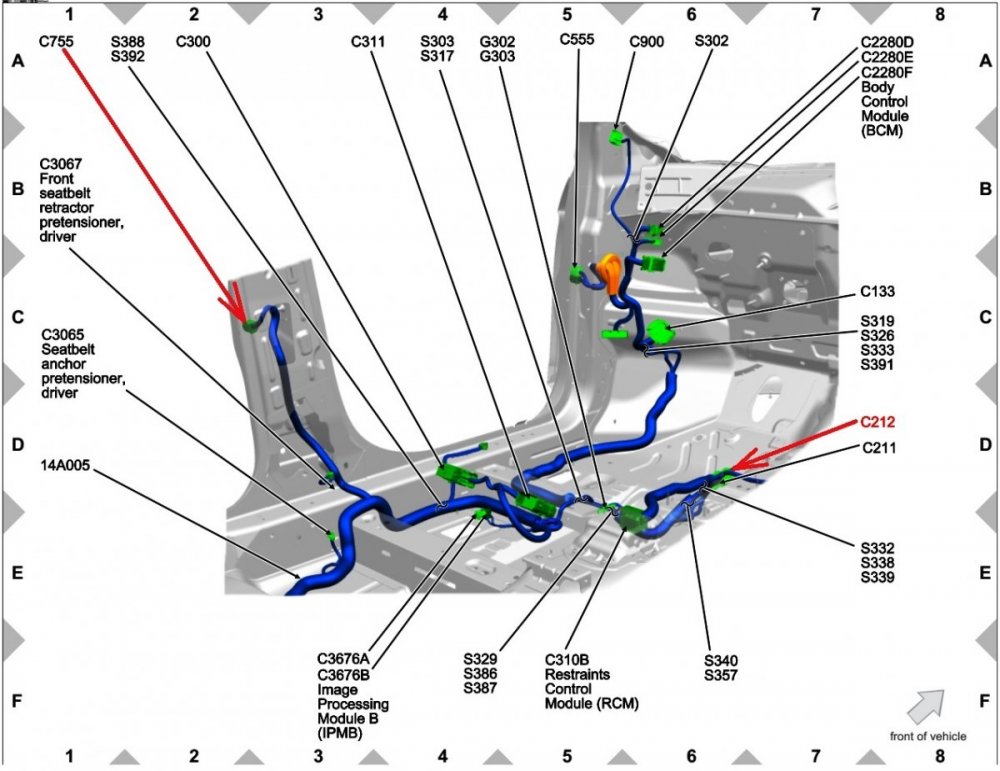
6-SpeakerWiring-InlineConnectorC855-RHB-Pillar-2022Edge.thumb.jpg.bb715e0a85a300c8b98f6cc4dea15ddb.jpg)
